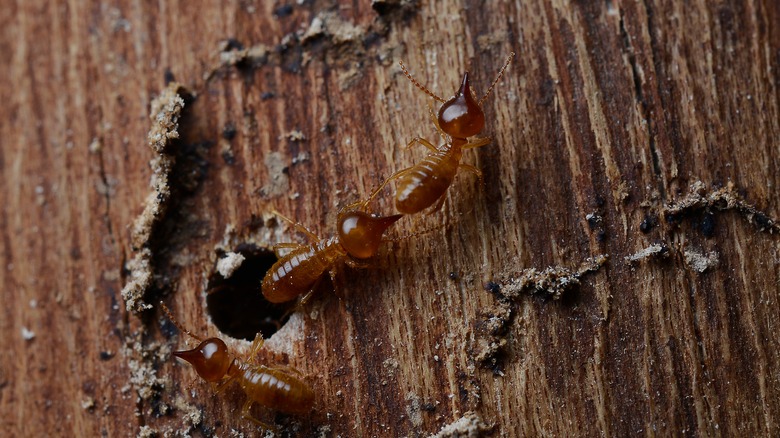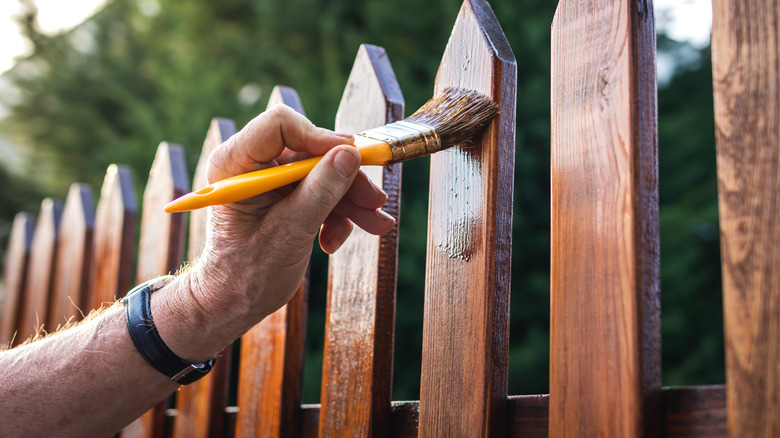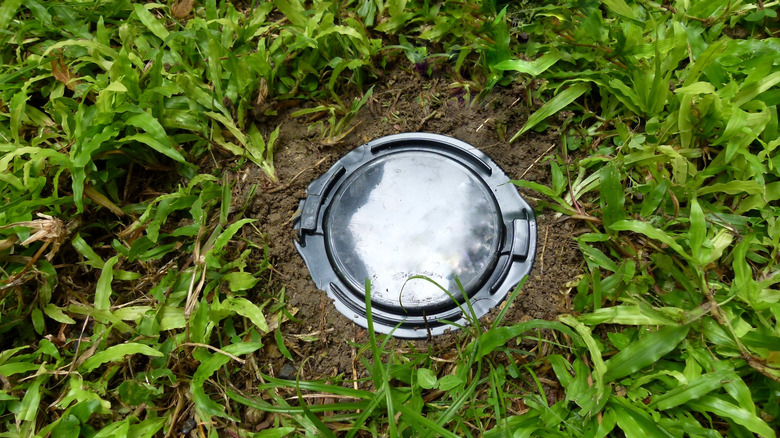The Best Ways To Keep Termites From Munching On Your Wooden Fence
Termites, those pesky little wood eaters, are the bane of every homeowner, costing $575 on average every time they are treated professionally. However, the rates can soar higher depending on how precarious the infestation is. When left unchecked, these white ants can completely eat away your wooden fences from the inside out, permanently damaging their structural integrity. Bearing this in mind, it's essential that you routinely check your boundary dividers for early signs of a termite plague, such as hollow-sounding wood, mud tubes, cracks or bubbles on the wood, and termite droppings like discarded wings.
However, beyond routine maintenance, following effective protective measures is what truly works for future-proofing your fence against a termite swarm. Coating your wooden enclosures in termite-proof paint and oil-based stains can effectively repel these wood eaters. Cultivating strong-smelling plants around your fence, such as garlic, lemongrass, and mint, will also drive these insects away. But if you are planning to reinstall your partition afresh, opting for naturally resistant wood is the right call.
Chemical treatments
As termites are averse to eating painted and varnished wood, treating your fence with oil-based primers works exceptionally well, especially for those made of cedar or pine. You can improve the results by thinning out the primer using mineral turpentine and applying it twice over the lumber. Follow it up by evenly coating your fence with a borate-based preservative. You may even pour a water-mixed borate solution into the wooden holes to allow deeper penetration and keep all termites off the nearby ground — though you should avoid this if you have plants growing around your perimeter barrier.
Further, top up your preservative with around two to three layers of termite-proof paint. You can alternatively use an oil-based stain if it works better for achieving your desired wood aesthetic and you want longer-lasting results. Finally, add one to two layers of polyurethane polish or shellac-based varnishes for protection. This will also protect your timber against moisture and sunlight damage.
Other ways to protect against termites
While chemically treating your wooden fence helps repel termites, you need to reapply the paint every two to three years to maintain the protection. Luckily, there are long-lasting ways to drive these wood devourers away. Exposing your wooden partition to adequate sunlight and eliminating excessive moisture can usually get rid of termites, as they thrive in damp environments. You must also remove heavy shrubs and grasses from your fence's surroundings to prevent these pesky critters from climbing up them. However, if you'd like to maintain a lush look, growing termite-repellent plants — such as catnip and velvet grass — is a good option.
Additionally, you can protect your perimeter from the relentless appetite of termites by installing bait traps every 3 meters, effectively killing wood munchers on contact. The only pitfall is that they are priced higher than other termite insecticides — namely fipronil and imidacloprid, which work just as well at terminating them. However, if nothing else works, reinstalling fences made of naturally resistant wood like cedar, redwood, and cypress is the best option.


